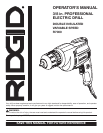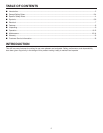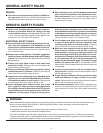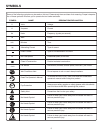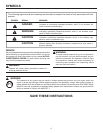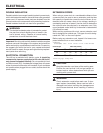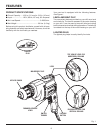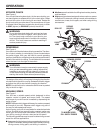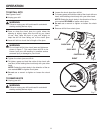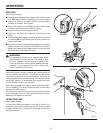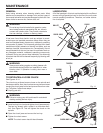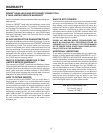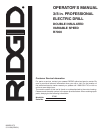
12
OPERATION
DRILLING
See Figures 8 and 9.
n Depress and release switch trigger to be sure your drill
is in OFF position before connecting it to power supply.
n Check the direction of rotation lever for correct setting
(forward or reverse). See Figure 4.
n Secure the material to be drilled in a vise or with clamps
to keep it from turning as the drill bit rotates.
n Plug your drill into power supply source.
n Hold your drill firmly and place bit at the point to be
drilled.
n Depress the switch trigger to start your drill. Do not lock
the switch ON for jobs where your drill may need to be
stopped suddenly.
n Move the drill bit into the workpiece applying only enough
pressure to keep the bit cutting. Do not force your drill or
apply side pressure to elongate a hole. Let your drill and
bit do the work. See Figures 8 and 9.
WARNING:
Be prepared for binding or bit breakthrough. When
these situations occur, drill has a tendency to grab
and kick opposite to the direction of rotation and
could cause loss of control when breaking through
materials. If not prepared, this loss of control can
result in possible serious injury.
When drilling hard, smooth surfaces use a center punch to
mark the desired hole location. This will prevent the drill bit
from slipping off center as the hole is started. However, the
variable speed feature allows starting holes without center
punching if desired. To accomplish this, operate your drill
at a low speed until the hole is started.
When drilling metals use a light oil on the drill bit to keep it
from overheating. The oil will prolong the life of the bit and
increase the drilling action.
If the bit jams in the work piece or if your drill stalls, stop the
tool immediately. Remove the bit from the work piece and
determine the reason for jamming.
LEVEL DRILLING
See Figures 8 and 9.
A convenient feature provided on your drill is a level. It is
recessed in the motor housing on your drill. It can be used
to keep drill bits level during both horizontal and vertical
drilling operations.
LEVEL
END VIEW
Fig. 8
LEVEL
TOP VIEW
Fig. 9
®
®
®
®



